Creating a Community Garden In a Tropical Place…
Have you ever visited a community garden?
I had the opportunity to help create a community garden with some very special friends in Miami, Florida.
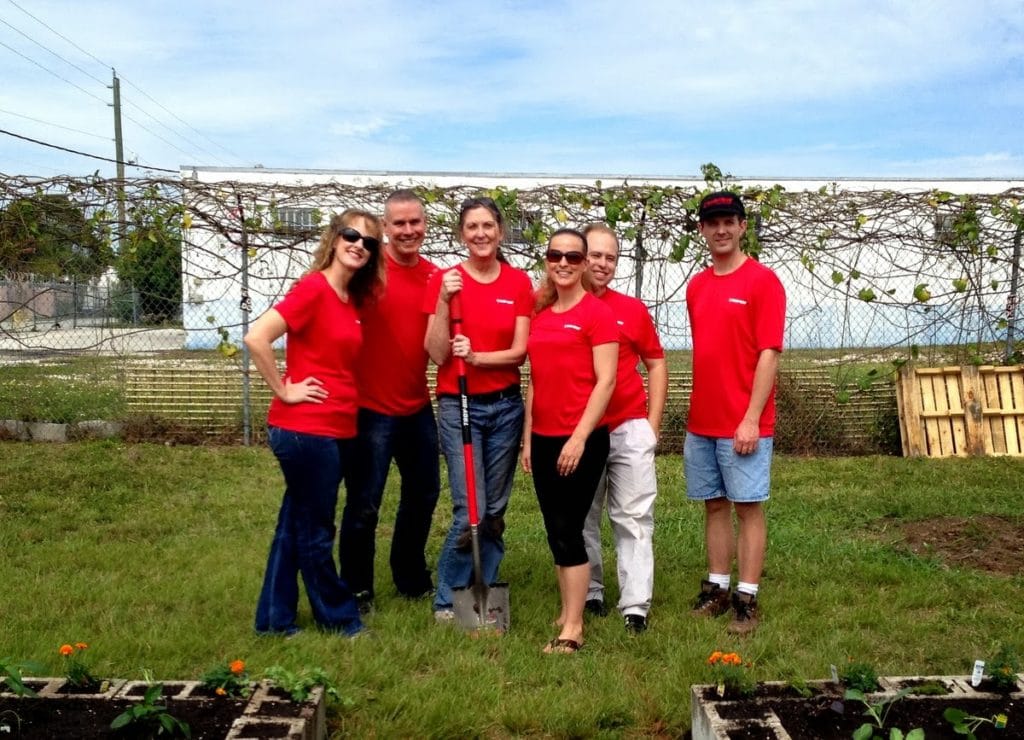
Me (Noelle Johnson), Matt Mattus, Helen Yoest, Amy Andrychowicz, Steve Asbell and Dave Townsend – the ‘Saturday6’
So, who are these special friends?
They are garden bloggers, like me and we’ve been brought together through our partnership with the folks at Troy-Bilt. We came from all over the United States and came together to work with the folks at a service project in Miami.

As part of our partnership, we share our gardening knowledge via Troybilt’s gardening newsletter – ‘The Dirt’, Facebook and Twitter. We also create how-to videos and test Troybilt equipment and offer our honest opinions.
This year, we were invited by Troybilt to help create a community garden as part of their continuing efforts to give back to the community.
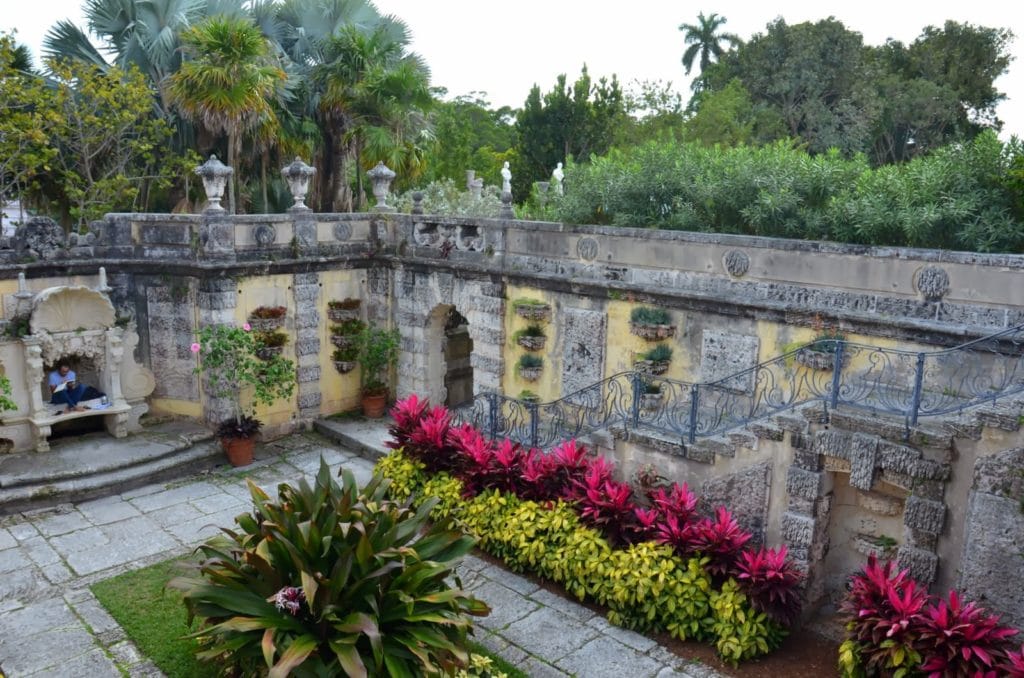
The day we all arrived in Miami, we had the opportunity to tour the Vizcaya Museum & Gardens, which you can read about here.
The next morning, we all gathered on a vacant lot in the Perrine Neighborhood in Miami.
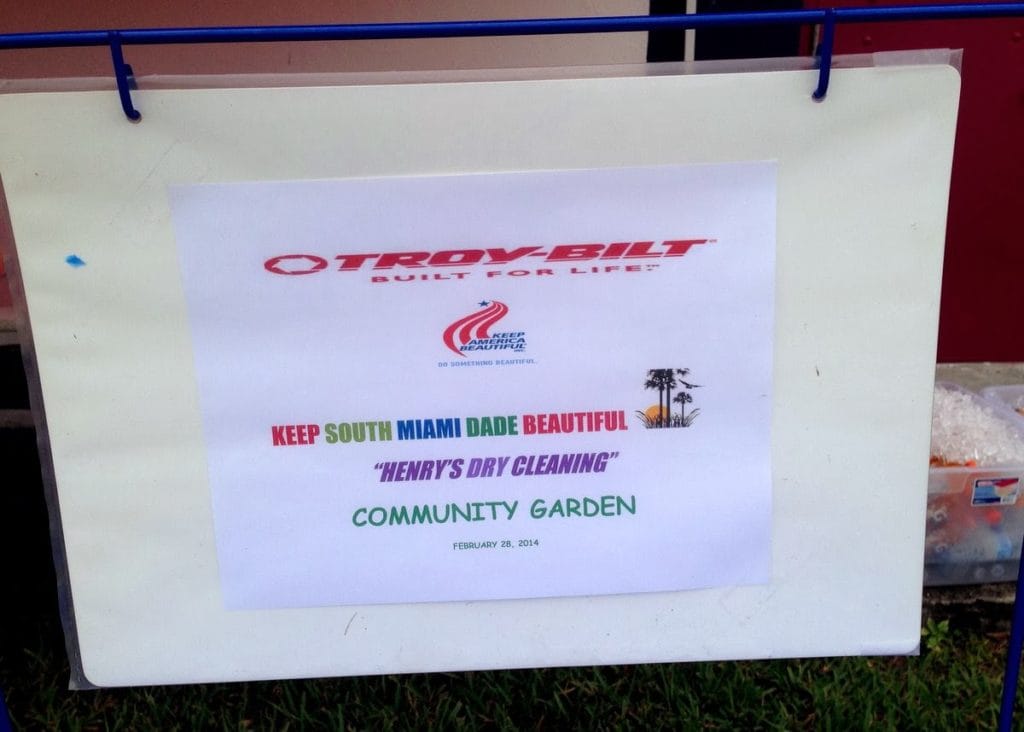
The local dry cleaner allowed the property adjacent to their store to be used for this inner-city community garden.

We were excited to be creating an edible garden for the surrounding neighborhood.
Imagine six gardeners together, trying to plan out a community garden. Believe it or not, it all went smoothly and we all agreed on a plan as to where to put the raised beds and what size they should be.
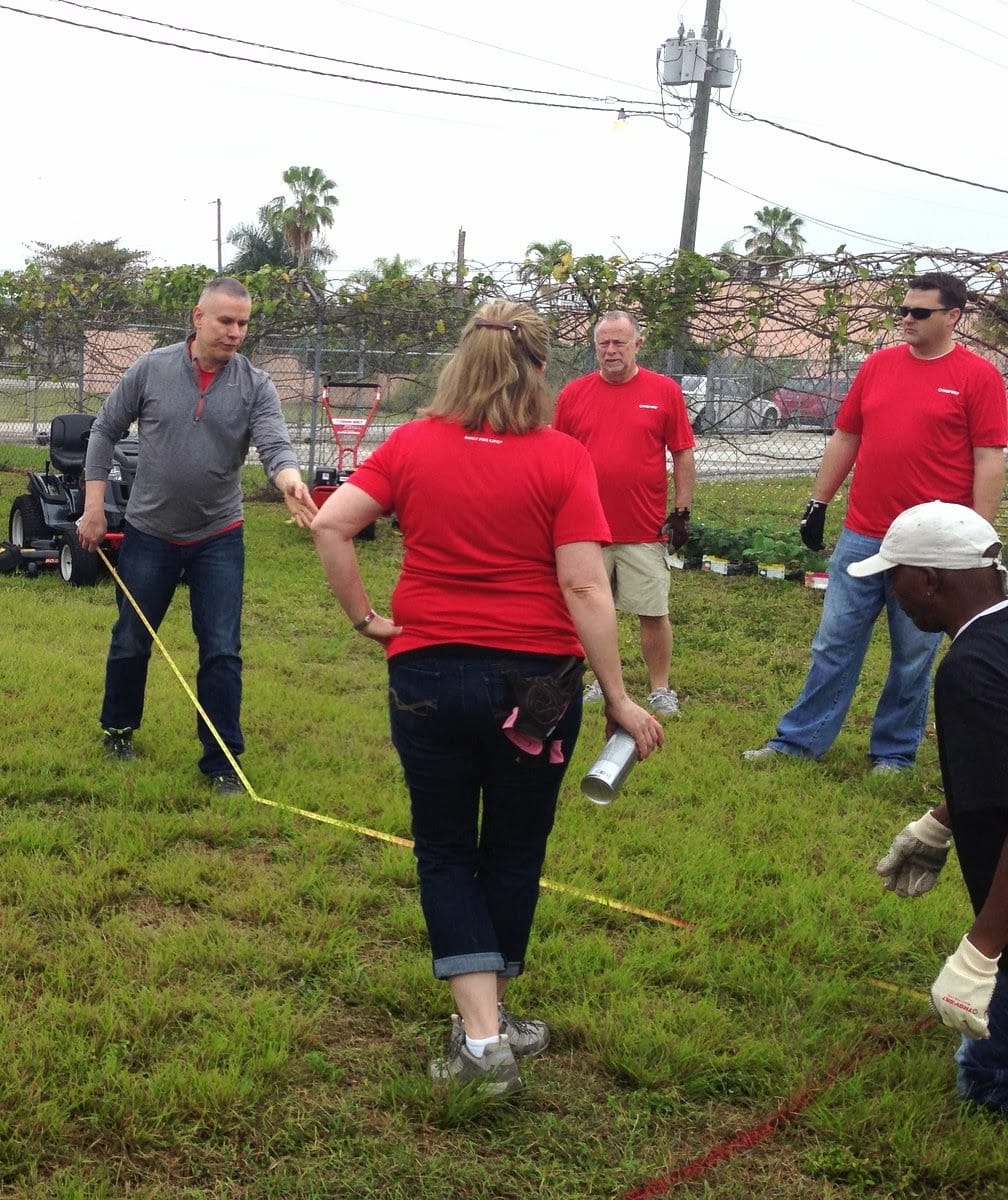
We measured out the placement for the beds with assistance from the folks at Troybilt and the Miami chapter of “Keep America Beautiful“.
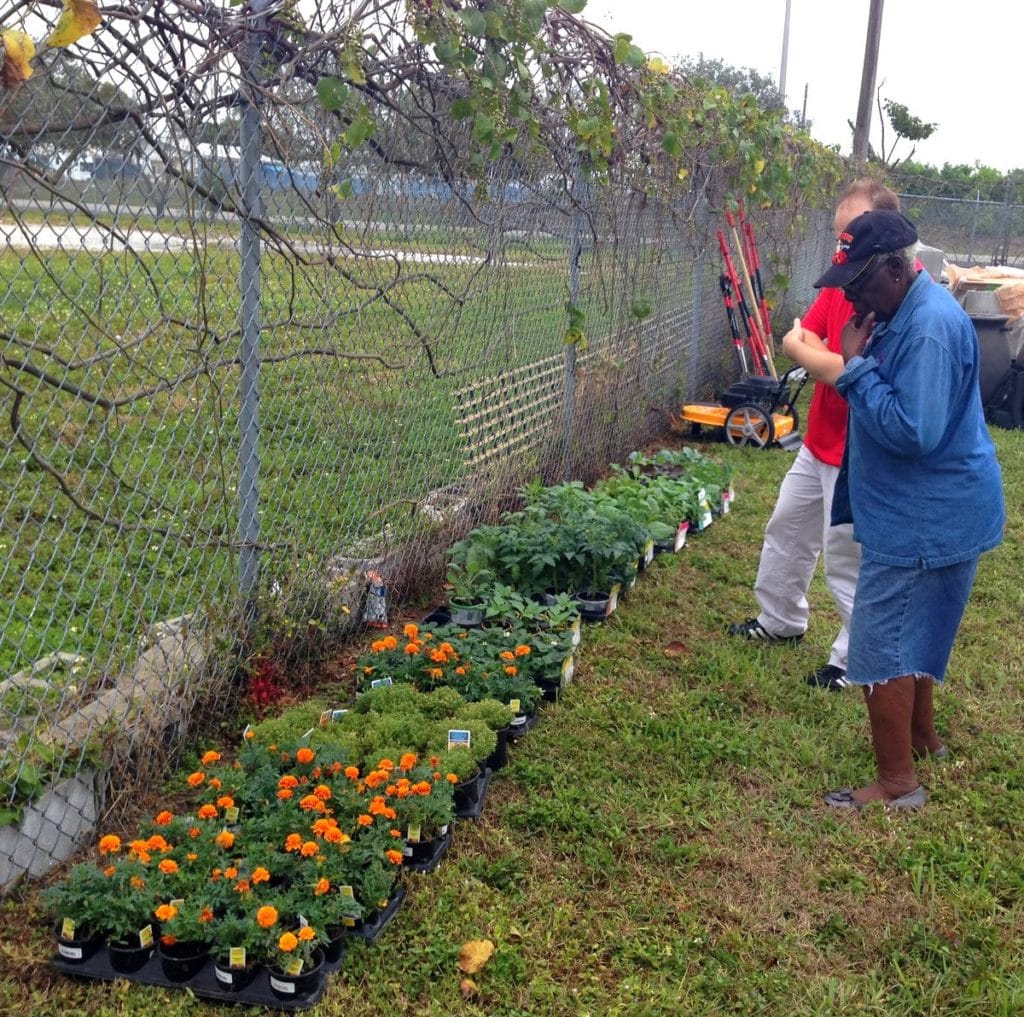
The surrounding community was very excited about the garden. We were happy to meet the Perrine neighborhood community activist, Ms. Townsend who would help to distribute the produce from the garden.
Steve Asbell (The Rainforest Gardener), took time to talk with her about the different vegetables and flowers that we would be planting in the garden.
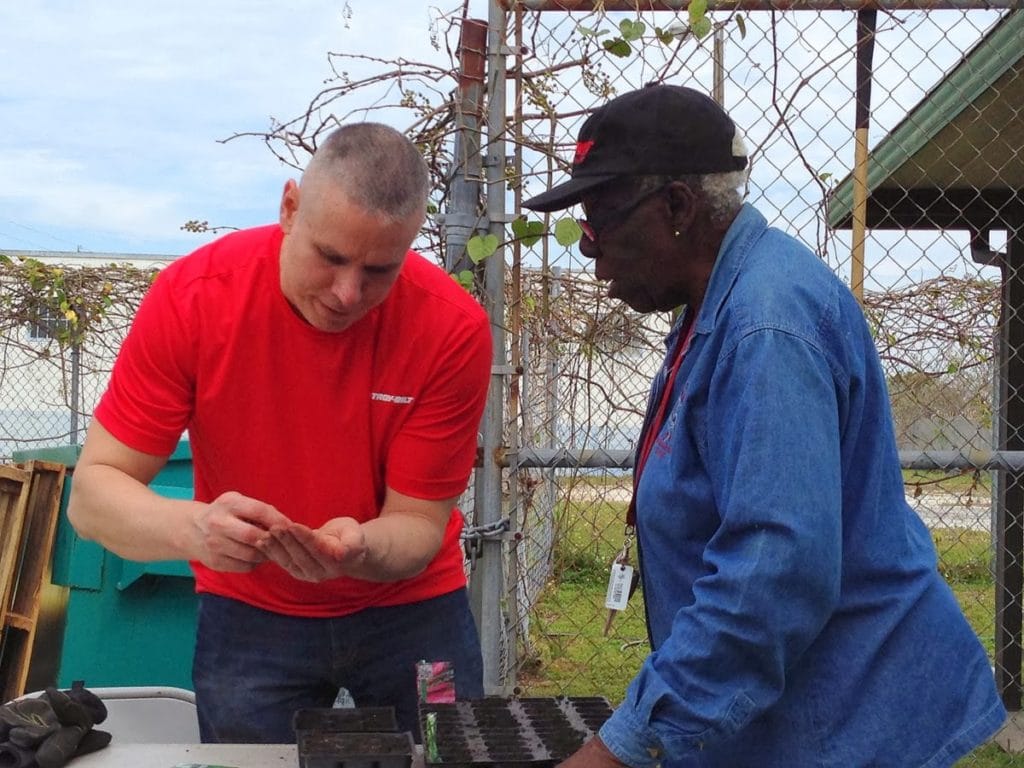
Ms. Townsend, was very interested in learning about the plants and seeds we would be planting. She listened carefully when Matt Mattus (Growing With Plants) explained to her how the seeds would grow.
*This special lady takes care of those in her neighborhood, including picking up day-old bread from the local supermarket, putting it in her car trunk and then delivers it to those in need.
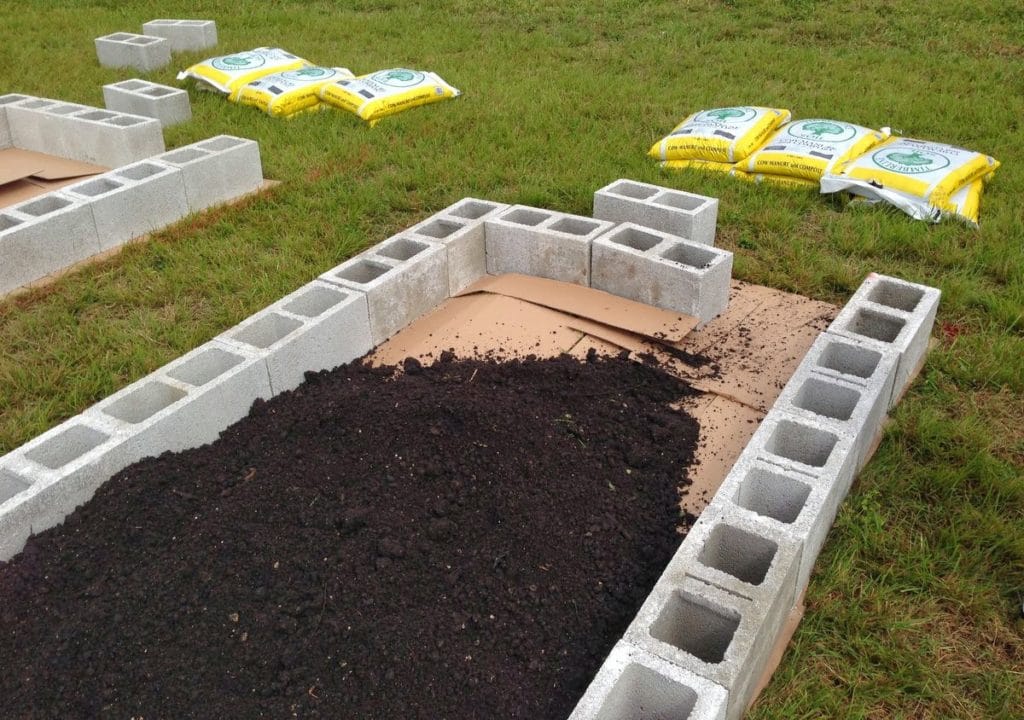
Once the outlines were painted, we used cement block to create the sides of the of the beds.
You may wonder why we put cardboard on the bottom of the garden beds. Well, the cardboard will form a nice barrier to keep the grass from growing through and will also serve to ‘smother’ the grass.
Initially, we had discussed planting some fruit trees alongside the raised vegetable beds, but we ran into a little problem with that plan…
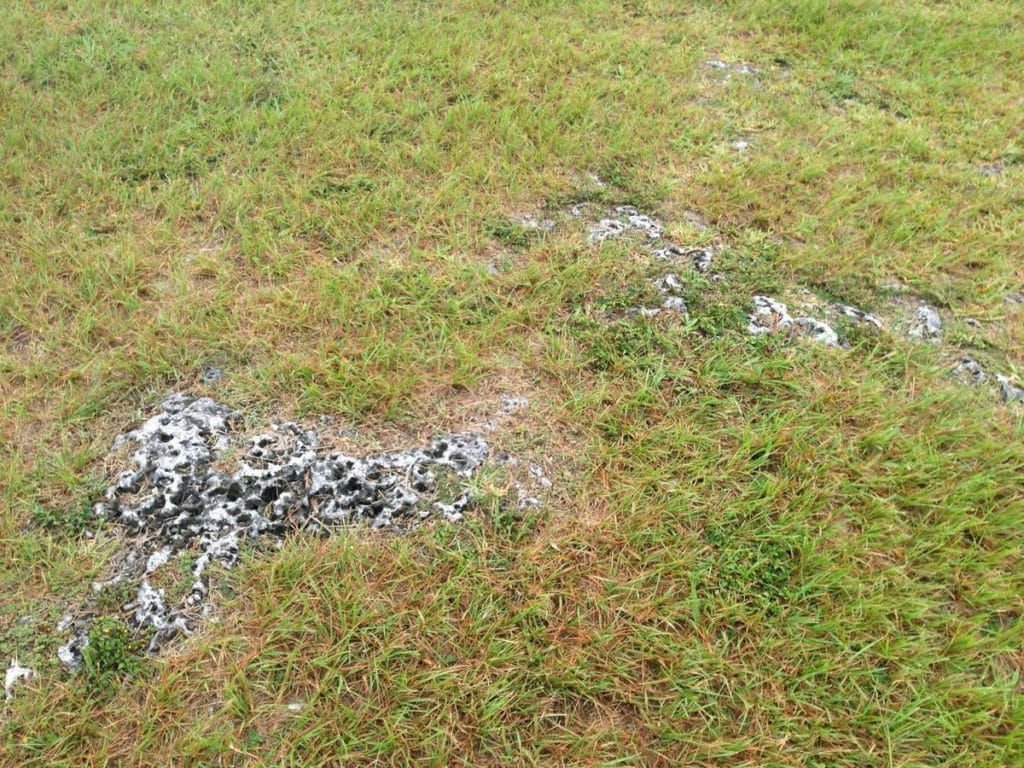
Limestone rock lay right underneath the grass, making digging all but impossible.
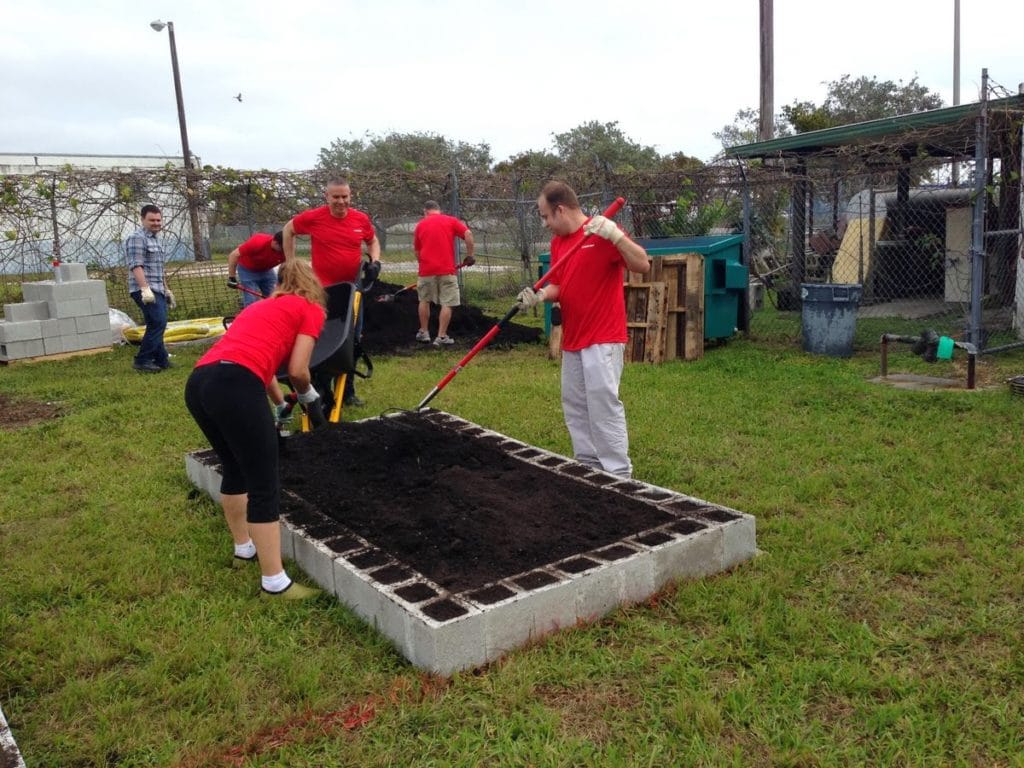
We filled the beds with topsoil and aged steer manure in alternating layers.
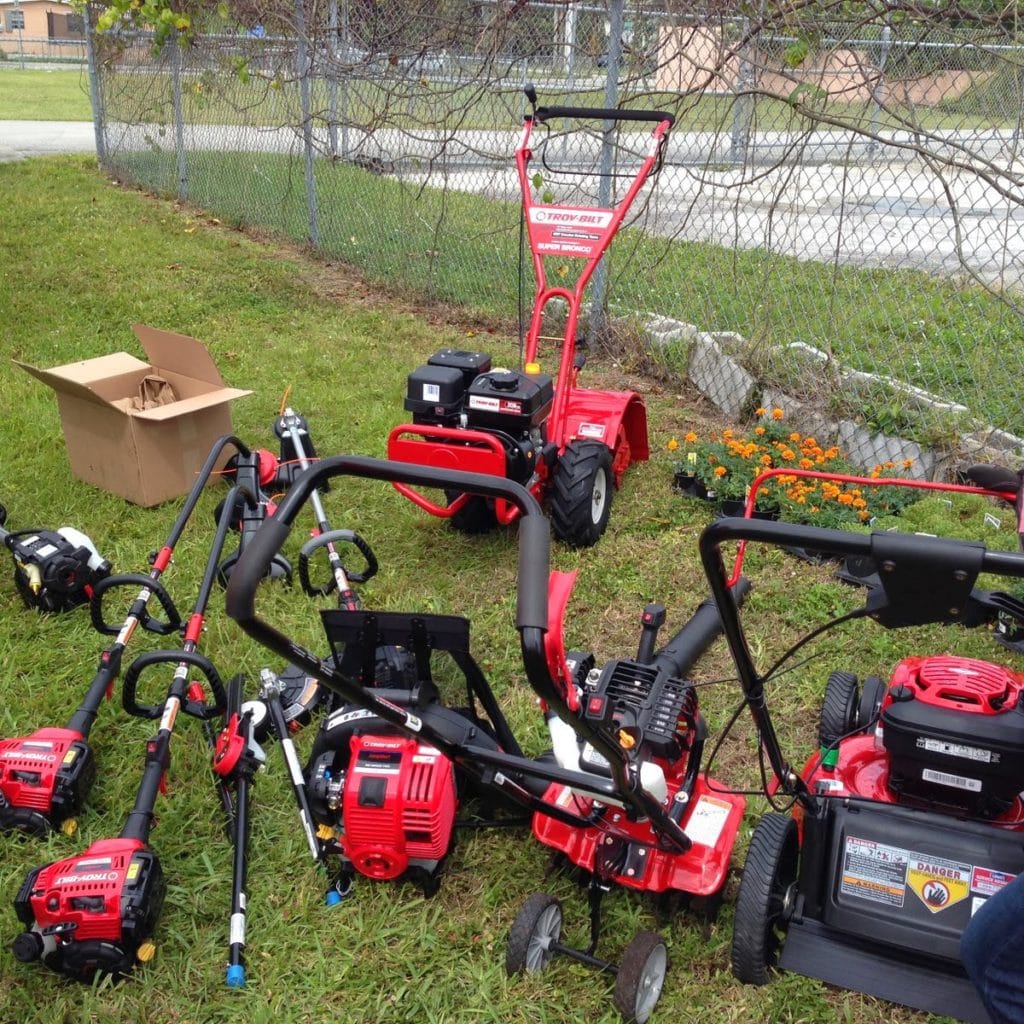
Troybilt supplied us with the necessary garden equipment including a cultivator, which we used to help mix the layers of topsoil and manure together.
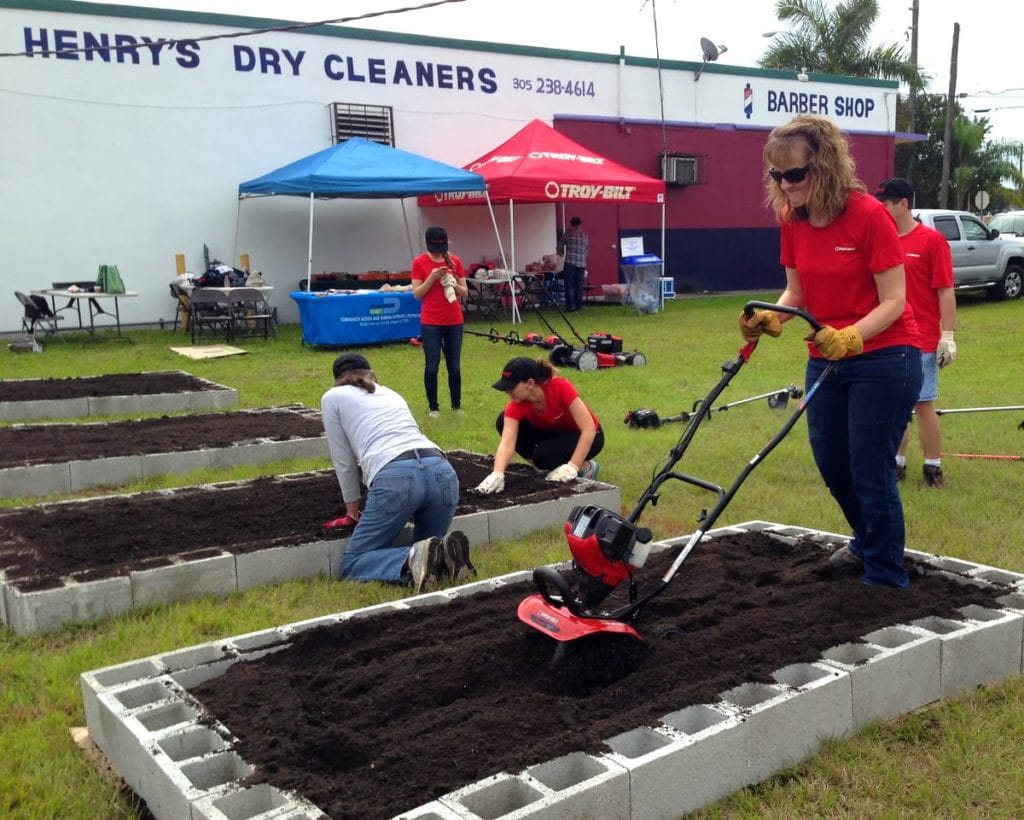
I have a smaller cultivator that attaches to my Troybilt string trimmer that I like to use in my vegetable gardens.
You can read more about my gardening adventures with my Troybilt cultivator, here.
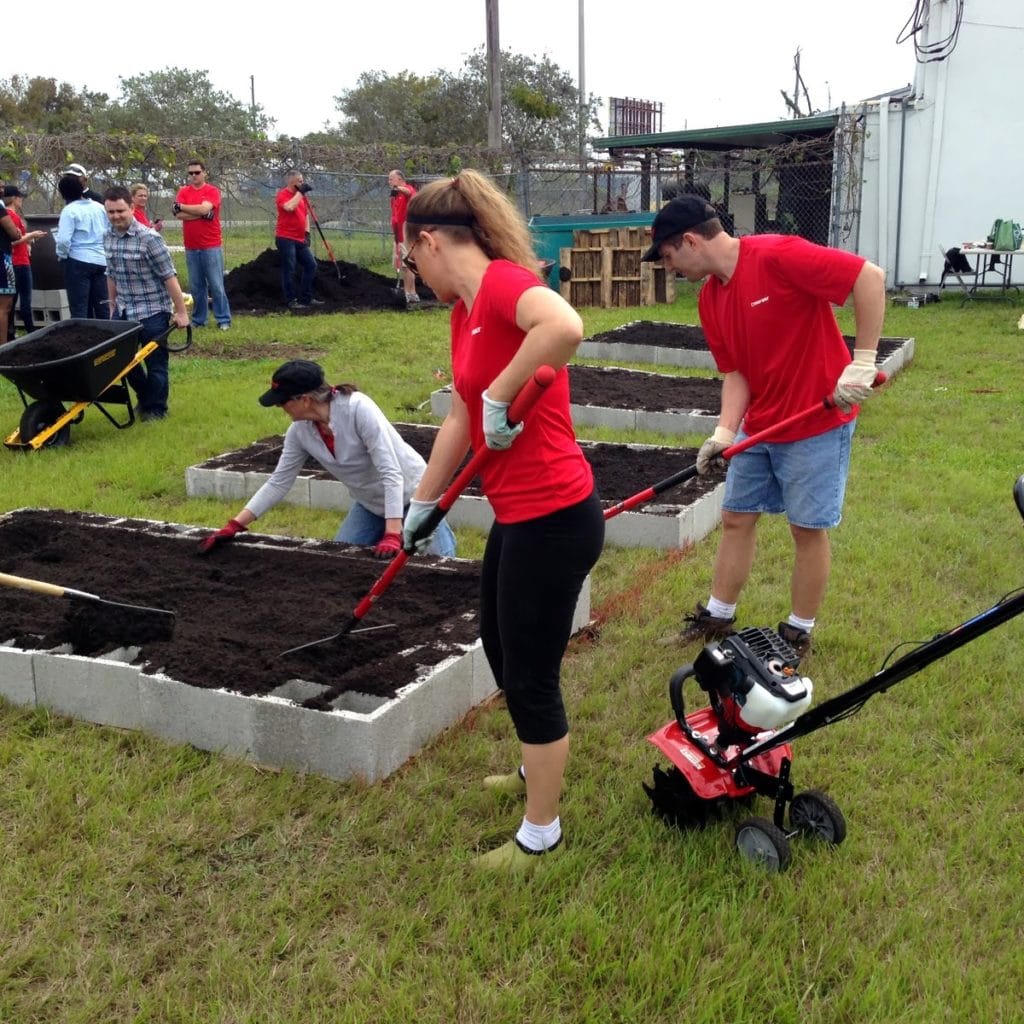
Amy Andrychowicz (Get Busy Gardening) and Dave Townsend (Growing the Home Garden) raked the soil smooth while Helen Yoest (Gardening With Confidence) filled the holes of the cement block with soil for planting.
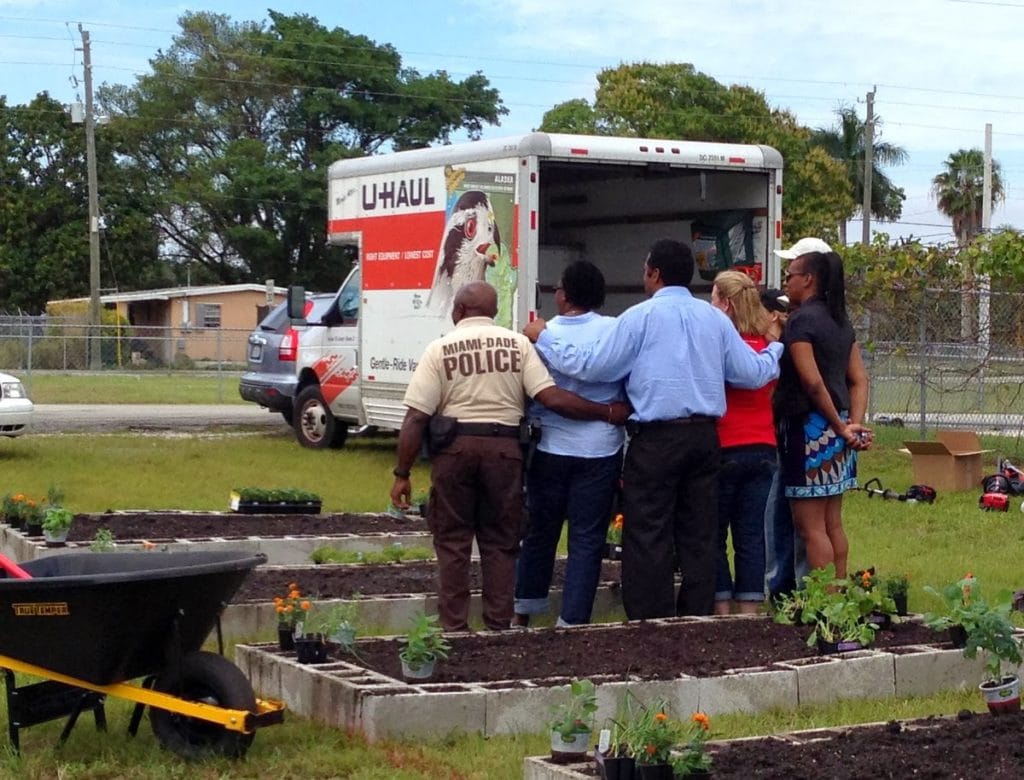
Community members posing for a picture with a Troybilt representative.
Members of the community came out to watch our progress, including the neighborhood police officer.
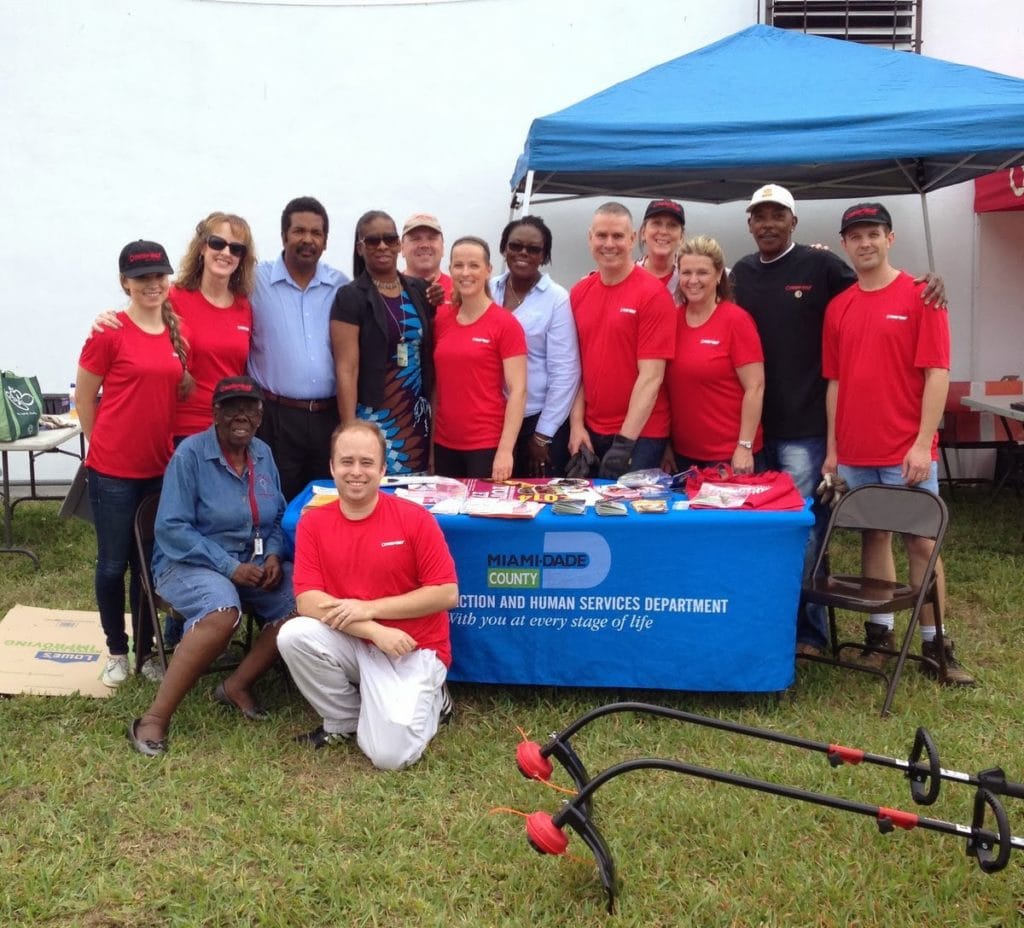
We took a quick break for lunch then took a picture with people from the neighborhood, Troybilt, Keep America Beautiful and officials from the Human Services Department who were on hand.
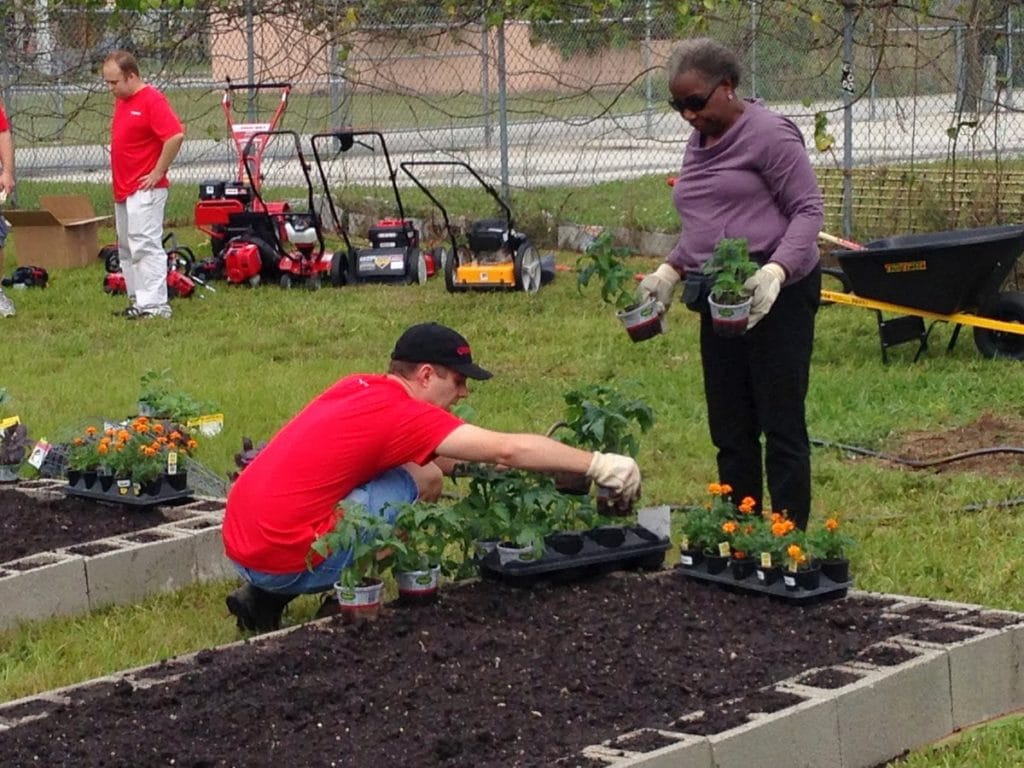
Local Master Gardener, Sheila Martinez, assists Dave Townsend with planting.
After lunch it was time for my favorite part – planting!
Sheila Martinez, a local Master Gardener, assisted us throughout the day and will be in charge of caring for the garden.
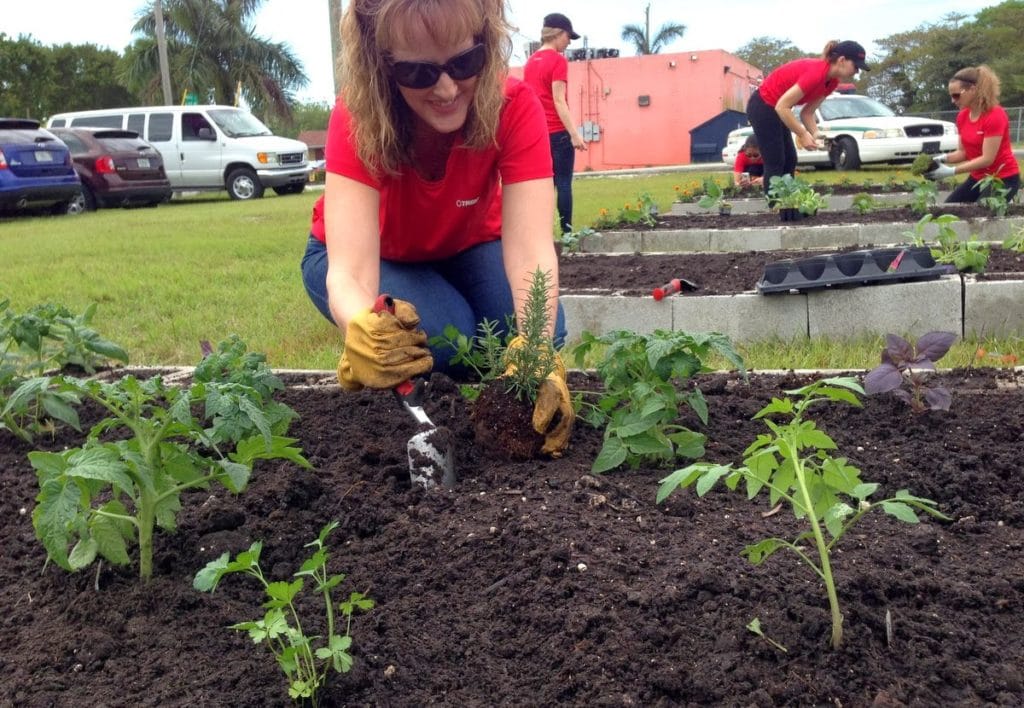
I had fun planting the first bed with tomatoes and herbs including flat-leaf parsley, purple basil and rosemary.
Other beds included strawberries, peppers, leaf lettuce, collard greens and onions. Beans were planted from seed.
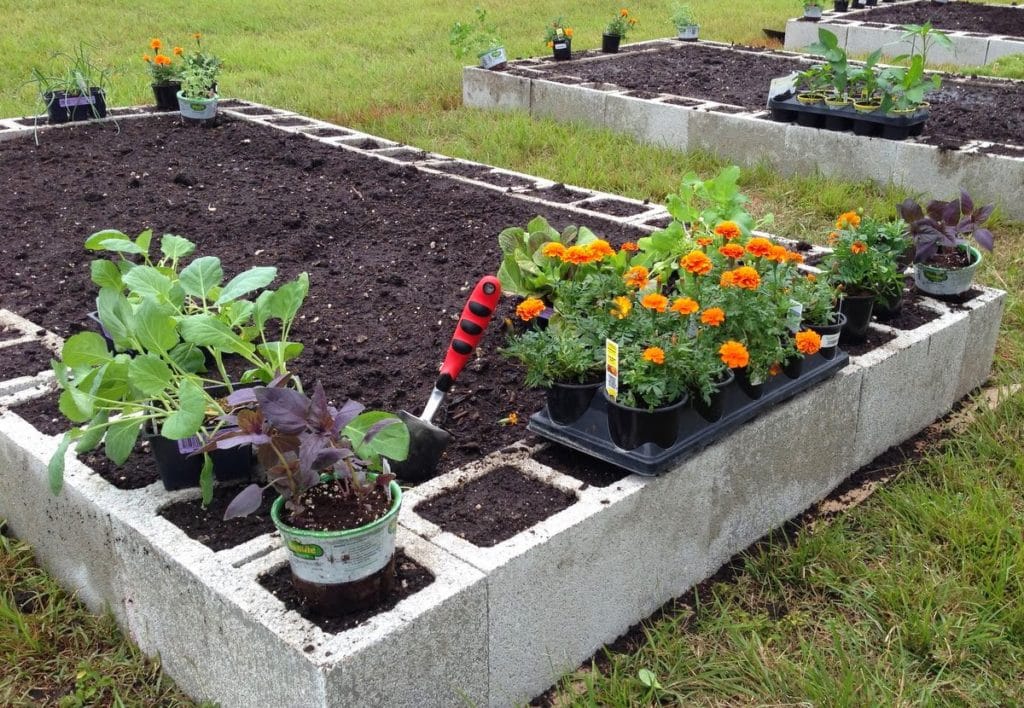
The holes in the cement block was filled with soil so that we could add companion plants, which help to attract pollinators as well as repel bad bugs from damaging the vegetables.
To that end, we planted sage, basil, green onions and marigolds in the holes, which will not only help to protect the edible plants but also add beauty to each garden.
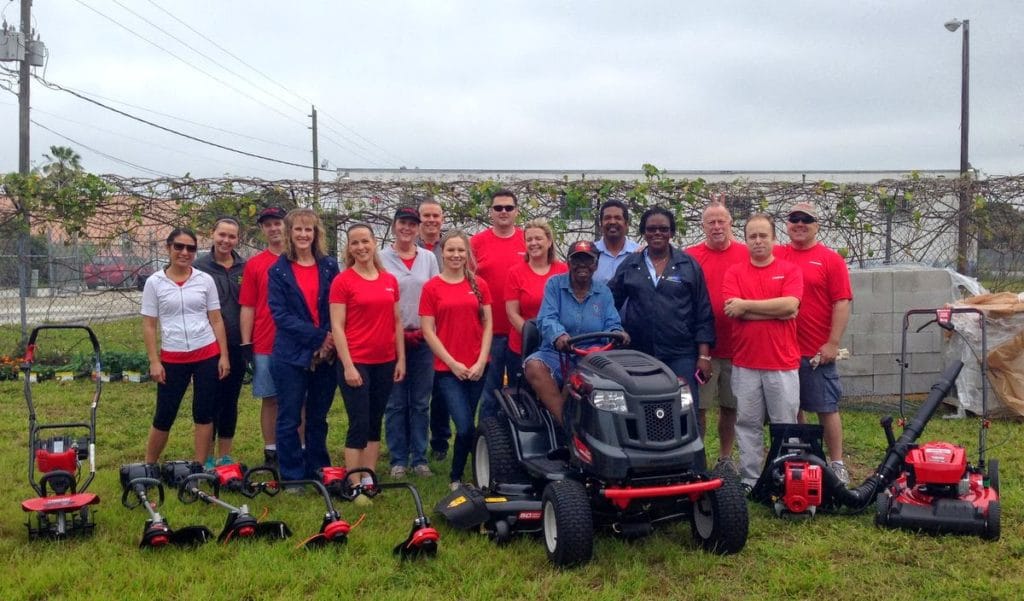
After a productive day in the garden, we were tired but happy with all we had accomplished.
This is the second year that we have all been part of the Saturday6. Imagine how much fun six garden bloggers have when they get together!
Last year we all met in Arizona and enjoyed a great time, which you can read about here.
I am so grateful to be a part of this group of great people and the opportunity to work with Troybilt again. I will be reviewing another piece of Troybilt equipment this year and giving one away, so stay tuned!

 Noelle Johnson, aka, 'AZ Plant Lady' is a author, horticulturist, and landscape consultant who helps people learn how to create, grow, and maintain beautiful desert gardens that thrive in a hot, dry climate. She does this through her consulting services, her online class Desert Gardening 101, and her monthly membership club, Through the Garden Gate. As she likes to tell desert-dwellers, "Gardening in the desert isn't hard, but it is different."
Noelle Johnson, aka, 'AZ Plant Lady' is a author, horticulturist, and landscape consultant who helps people learn how to create, grow, and maintain beautiful desert gardens that thrive in a hot, dry climate. She does this through her consulting services, her online class Desert Gardening 101, and her monthly membership club, Through the Garden Gate. As she likes to tell desert-dwellers, "Gardening in the desert isn't hard, but it is different."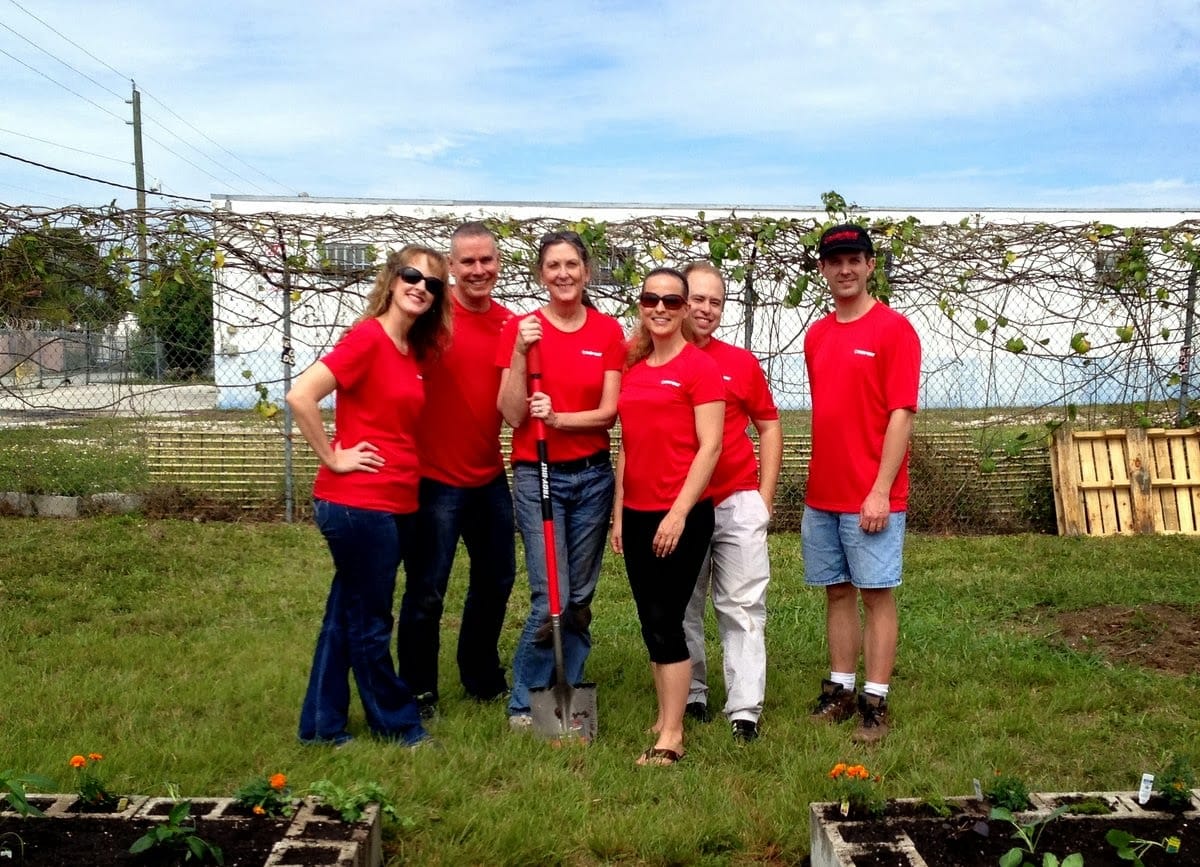
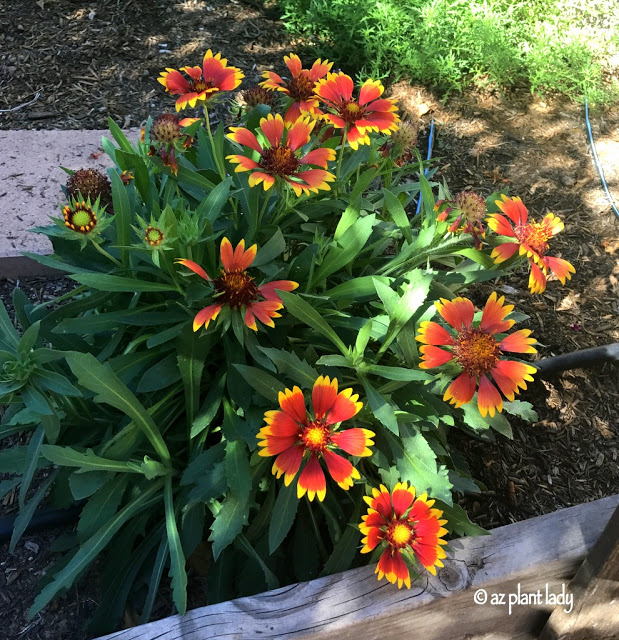
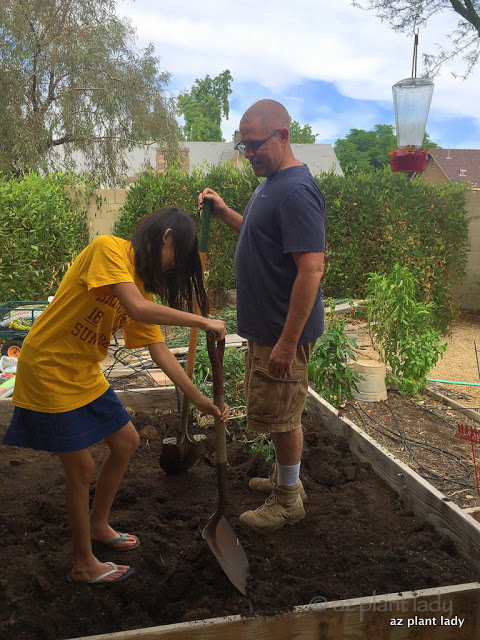
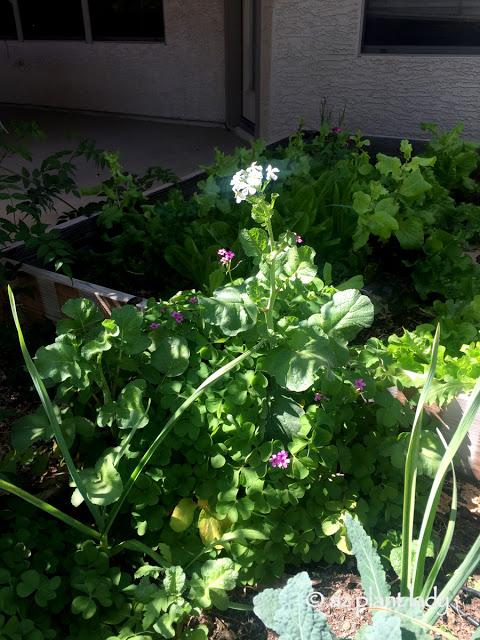
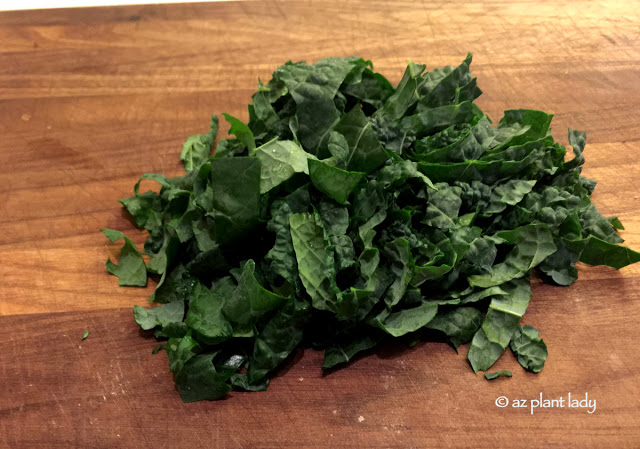
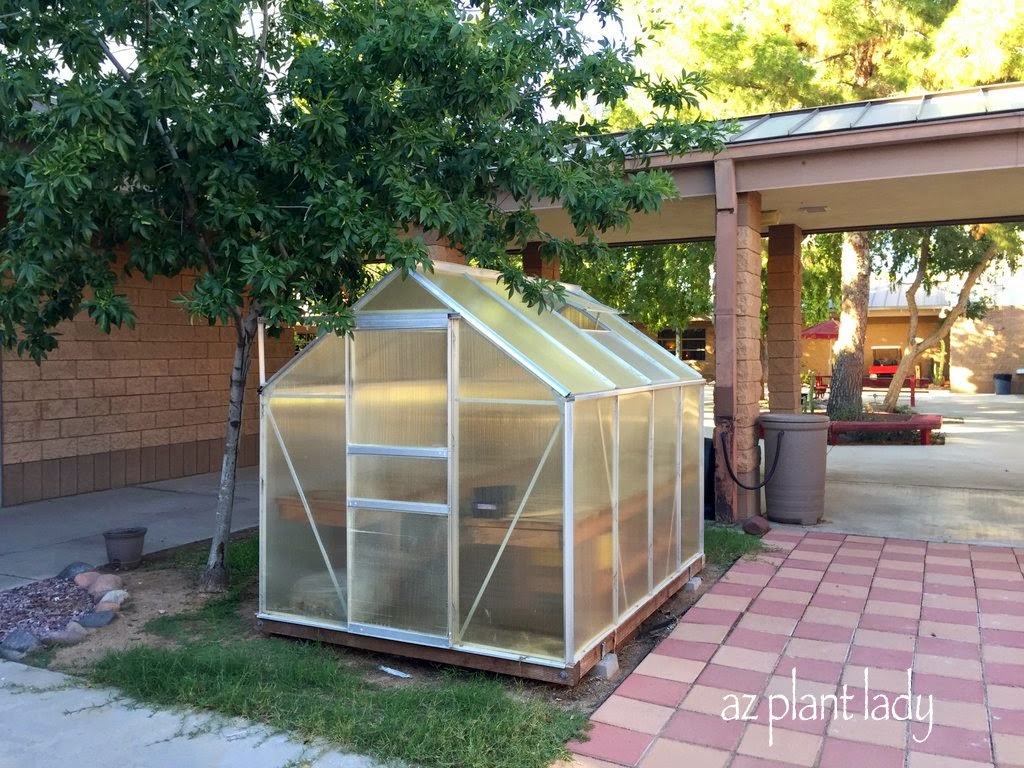
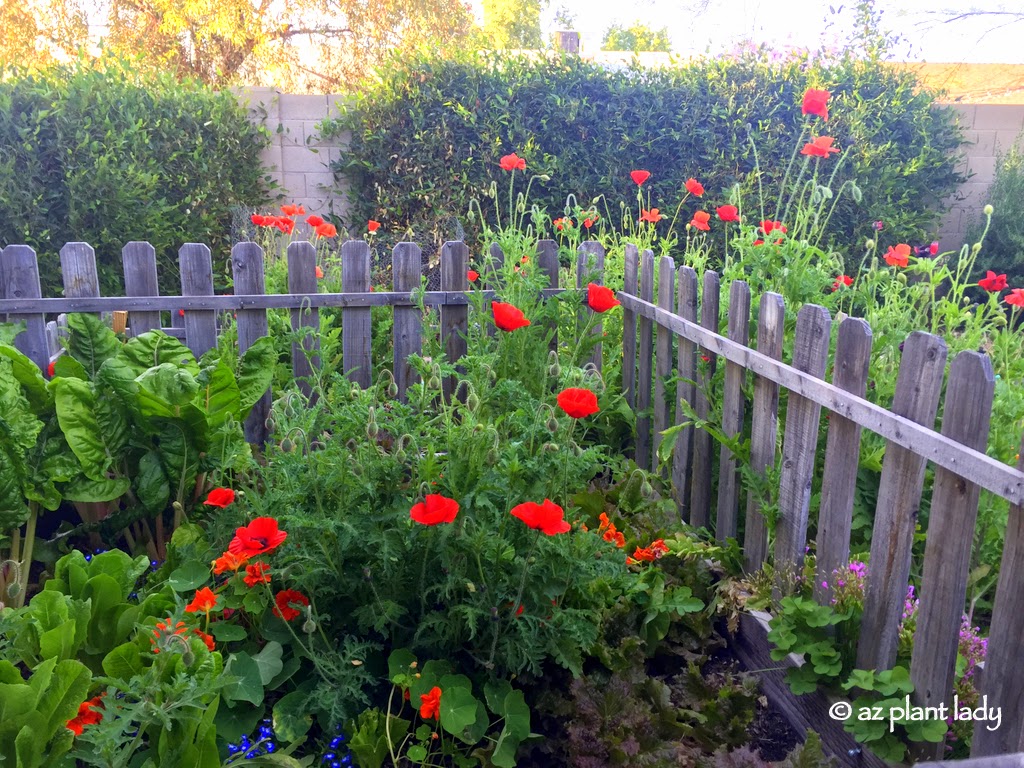















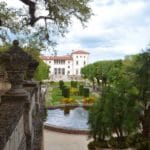
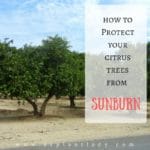
Would you recommend a slump block raised bed garden in Arizona? I would think the heat from the blocks would be too much for plants
Great recap, Noelle! It was such an honor to work beside you on this project. Looking forward to the year working together! Helen
Hello Bonnie,
Believe it or not, many desert gardens do use concrete block for raised vegetable beds. The concrete block we used for this project were hollow in the middle, which provides some insulation from the heat.
That being said, I would probably not use concrete block myself because it would make the soil hotter then other materials.
Thank you for your question!
Noelle
What a a good project, to culminate the tour and time in Miami. I like how various people in that part of of the city are doing follow-through…perfect.
(your numbers look to have grown from the 1st photo)
What a great project! Kudos to you and the team!
I love this story. Its such a blessing to help others in need. Is there anyway to send additional plants to Ms Perrin?
Jan Small
Hello Jan (Jbob),
Thank you so much for your interest in helping this neighborhood garden. I recommend contacting 'Hansel' from the Miami chapter of Keep America Beautiful in regards to contributing to the garden. Here is there website: http://www.miamidadematters.org/index.php?controller=index&module=PromisePractice&action=view&pid=3955
Thank you!
Noelle (azplantlady)